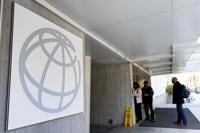The Bank of Canada surprised almost no one when it held interest rates steady at five per cent Wednesday amid cooling economic data. Here's what you need to know about the decision, and what could be next.
Why did the Bank of Canada decide to leave its key rate unchanged?
Recent evidence, including labour market, inflation and GDP reports, shows excess demand in the economy is easing, the central bank said in its news release. Monetary policy works with a lag, and so the bank is leaving the rate where it is because it expects the effects of rate hikes will continue to work their way through the economy, further slowing it down.
"Interest rates are already at levels that the central bank views as 'restrictive' enough to put downward pressure on economic growth and inflation pressures over time," wrote RBC assistant chief economist Nathan Janzen in a note analyzing the decision.
Inflation has eased from its highs a year ago, cooling to 3.3 per cent in July. The bank’s target is two per cent.
Meanwhile, Canada posted a negative second-quarter GDP, and the unemployment rate has been on the rise for three consecutive months.
What does this mean for my mortgage renewal?
Anyone with a fixed-rate mortgage has been watching the central bank’s key rate rise while they continue to pay the same lower rate they locked in at the beginning of their contract. But when those contracts come up for renewal, borrowers will be faced with much higher rates than their previous deal. That would have been the case whether the central bank hiked this week or not, as it's already hiked 10 times since March 2022.
If you have a variable-rate mortgage with fixed payments, it’s a similar story, but with one (likely alarming) caveat: you’ve watched the amortization period or length of your mortgage grow and grow with rate hikes even as your monthly payments stay the same. Come renewal time, rates will be much higher than they were when you last shopped around.
If you have a variable-rate mortgage with variable payments, you’ve already felt the pain as those payments rise and rise with each hike by the central bank. When you renew, those higher rates available to you may not be as much of a shock because you’ve already been paying them.
Is the Bank of Canada done raising interest rates?
The Bank of Canada kept the door open to more hikes in the future. It’s maintaining its focus on economic data, and if indicators like GDP or inflation start to heat up again, the central bank could very well announce more hikes.
The period of weak economic growth that the central bank says Canada has entered will likely continue into early 2024, said TD senior economist James Orlando in a note. But that doesn’t mean the central bank is going to announce it’s done hiking.
“Although the BoC has moved back to the sidelines, it doesn't mean it will let up on its hawkish rhetoric. It needs to make sure that financial conditions remain tight for the economy to continue to slow,” wrote Orlando.
But with the slowdown set to continue, the bar for another hike has been raised, he said.
If raising rates curbs inflation, why is the Consumer Price Index still elevated?
The Bank of Canada’s interest-rate hikes don’t work overnight — they can take months, if not a year or two, to fully make their effects known on the economy. Those effects have become increasingly clear as the summer progressed, but economists don’t think they’re fully realized yet, meaning more softness is likely to come.
There are also a few complicating factors. One is that the cost of shelter is part of the calculation for inflation, and higher rates are leading to higher shelter costs. Another is that inflation includes things like gas and food prices, which are not directly impacted by the interest rate, and which are affected by global events like war and environment, leading to volatility.
Inflation eased to 2.8 per cent in June but ticked higher in July as gas prices have steadily risen over the summer. Gas prices continued to increase in August, which will likely mean a higher figure for the Consumer Price Index in the short term, the central bank said.
When will interest rates start dropping?
That’s the question markets have been grappling with all year. Some thought that central banks could start cutting by the end of 2023, but those expectations have all but dissipated as the year wore on.
The Bank of Canada does not want to spark hope of rate cuts — earlier this year, “a short-lived pause sparked thoughts of eventual rate cuts, in turn firing up housing,” wrote BMO chief economist Douglas Porter in a note.
Inflationary pressures are still present, the central bank said in its announcement Thursday, indicating that the fight isn’t over. It didn’t even use the word “pause” in its statement, let alone the word “cut.”
CIBC Capital Markets’ chief economist Avery Shenfeld wrote that five per cent will likely be the peak rate of this tightening cycle.
“That said, we’re still a long way from a full all-clear statement from the (central bank), let alone any mention of rate cuts.”
This report by ��ɫֱ��was first published Aug. 6, 2023.







































